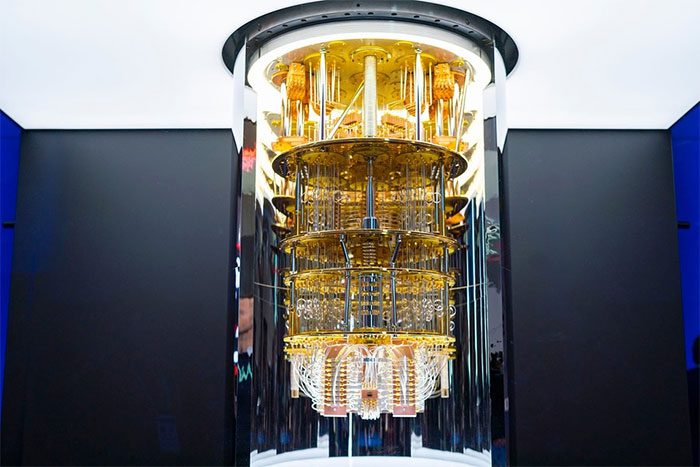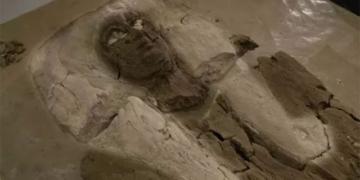Quantum computer systems with hundreds of thousands to millions of qubits are being developed by IBM and Google, with plans to complete them in the next decade.
At the end of last year, IBM set a record for the largest quantum computer with a processor of 433 quantum bits, or qubits, the unit of quantum information processing. At the G7 summit, the company announced an even larger ambition: to complete a 100,000-qubit computer within the next 10 years.
IBM announced that it would invest $100 million to create a supercomputer capable of solving problems that no current supercomputer can address. The idea is to use this 100,000-qubit computer, combined with the best supercomputers, to develop new drugs, new fertilizers, new battery compounds, and a multitude of other applications.
Quantum computing processes information by exploiting the properties of fundamental particles. Electrons, atoms, and small molecules can exist in multiple energy states simultaneously, a phenomenon known as superposition, and the states of these particles can be entangled. Each qubit can exist in both 0 and 1 states at the same time, unlike traditional computer bits which can only be in one state at a time, allowing for multiple calculations to be performed concurrently.

IBM’s Quantum Computer. (Photo: IBM).
Millions of Qubits in Quantum Computing
Despite the promise, quantum computers have yet to accomplish anything useful that conventional supercomputers cannot do. This is primarily due to the insufficient number of qubits and the susceptibility of quantum computing systems to disruptions from small disturbances, known as noise.
Researchers predict that quantum computing systems will need to scale significantly to allocate a large portion of qubits for error correction due to noise.
Therefore, the sheer number of qubits does not represent the capability of a quantum computer. Specific details about how qubits are manufactured, their noise error correction capabilities, and their operational feasibility are also crucial.
IBM is not the only company with grand ambitions. Google has stated that they aim to create a one-million-qubit quantum computer by the end of this decade, with only 10,000 qubits dedicated to computation and the remainder for error correction.
IonQ aims to achieve 1,024 “qubit logic”, where each qubit logic is formed from a fault-tolerant circuit consisting of 13 physical qubits, by 2028. PsiQuantum, like Google, is also working towards building a million-qubit quantum computer but has not disclosed any timelines or error correction configurations.
No Guarantees of Success
IBM’s qubits are currently made from superconducting metal loops, similar to atoms when operating at millikelvin temperatures, just slightly above absolute zero at -273 degrees Celsius. IBM has indicated that this type of qubit can only scale up to a maximum of 5,000 qubits with current technology, which is not large enough to yield significant computational benefits.
Currently, each superconducting qubit of IBM requires about 65 watts to operate. With 100,000 qubits, it would necessitate a nuclear power plant to supply energy and billions of dollars to develop the computer. Jay Gambetta, Vice President of IBM’s Quantum Computing division, stated that the company intends to use technology called “Complementary Metal-Oxide-Semiconductor” (CMOS), which could be installed alongside qubits to operate them with only dozens of milliwatts.
CMOS is still in the experimental phase, and the technologies needed for quantum supercomputing do not yet exist, Gambetta admitted.
There is no guarantee that the $100 million allocated for this project will be sufficient to create a 100,000-qubit computer. “There are definitely risks,” Gambetta said.
“This will not be a completely smooth journey,” remarked Joe Fitzsimons, CEO of Horizon Quantum, a quantum software developer based in Singapore.
According to Fitzsimons, IBM’s plan seems reasonable, although there are still many potential hurdles. “At this scale, it will be very difficult to develop control systems that can efficiently operate such a large number of qubits,” the expert noted.




















































